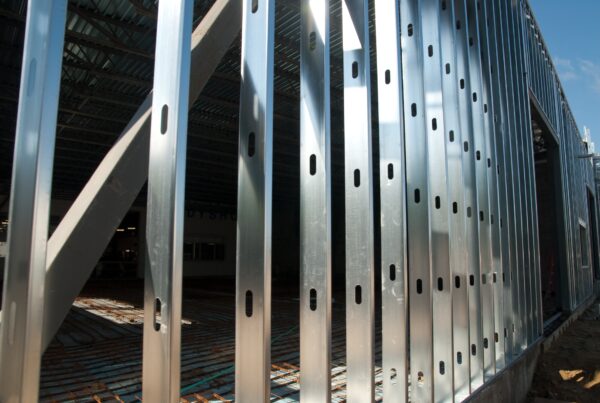Streamline process and improve output – how the rising use of BIM digital engineering is changing the construction industry.
Article originally posted at Elland Steel
While the look of buildings going up nowadays might feel radically more different and modern to those constructed decades ago, the underpinning processes to build them are not. Construction has changed very little in the last century.
Until now. The growing use of sophisticated technologies and automation – using BIM in building design and construction – is helping to significantly improve or streamline processes. While the steel industry has been using 3D modelling (one of the tenets of BIM) for many years, acceptance of BIM capabilities as a necessity is a relatively new development for construction.
Moving away from the pen and paper of old, BIM (Building Information Modelling) is a number of online tools and technologies to design, test and share projects. It uses digital engineering to collate, communicate and manage all information on a construction project, offering a multitude of benefits.
It allows for multiple users to work on projects simultaneously, ensuring collaboration between all project stakeholders, from design managers and quantity surveyors to project directors and sub-trades. By bringing those contributors together, able to align the appointment of sub-contractors, sub-trades and consultants from the get-go, BIM reduces the time and resource spent on projects. And as it collates information from more and more processes, it is able to identify commonalities and use these to anticipate challenges or suggest modifications during the design process, ultimately delivering improved plans and outcomes for clients.
In the four years since we achieved BCSA accreditation to BIM Level 2 at Elland Steel, we’ve embedded it at all stages of the process to deliver project-wide benefits that go beyond just the design and erection of the structural steelwork. The benefits of this digital engineering include:
Pre-construction stage:
- Creating a 3D digital version of the building before construction – visualisations and simulations allow for earlier detection of errors.
- Analysing the sustainability of the build – those same visualisations and simulations show how the proposed design will impact future energy usage and the building’s acoustics and lighting.
- Supporting costs estimation – the use of model-based cost estimating (5D BIM) automates the quantification and application of costs, reducing time and risk of human error. As well as 3D modelling and 4D time scheduling, the 5D element of BIM counts components and applies defined rates; information which can then be extrapolated to provide regular cost reporting.
- Improving clash detection – by combining all design and construction information, mapping both the structural steelwork and the utilities to run through it, any clashes can be detected earlier.
- Offering a readymade communication channel – by bringing together all stakeholders through cloud-based tools, BIM allows knowledge, systems and structure to be shared easily to streamline processes.
Construction stage:
- Improving on-site safety – similar to identifying potential clashes, BIM can identify potential hazards or risks, making the final build site safer for workers.
- Reducing costs – this is a benefit BIM affords to all stages of the project, by avoiding rework (as above, delivering an up to 90% reduction in reworking).
- Creating and maintaining real-time information and inventories – by collating all information, BIM can check all components needed and reduce the need for on-site inventories.
Post-construction stage:
- Sharing information with the building’s end-users – having collected valuable information throughout the design and build process, contractors can then pass this on to facilities managers.
The benefits of BIM are clear, as the investment pays dividends over the lifetime of both project and building.
At Morgan Sindall Construction (an Elland Steel client) application of digital engineering practices have enabled 26% of projects to be ahead of programme and reduced variations by 4%. Similarly, other projects reported anywhere from 40-90% reduction of reworking in the construction phase thanks to the implementation of BIM, while a study by McKinsey found 75% of companies who have adopted BIM report a positive return on investment.
Contractors who choose companies proficient in BIM and willing and able to take a collaborative approach to construction will save money, time and resource and deliver improved projects with long-lasting benefits.





